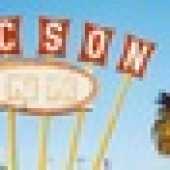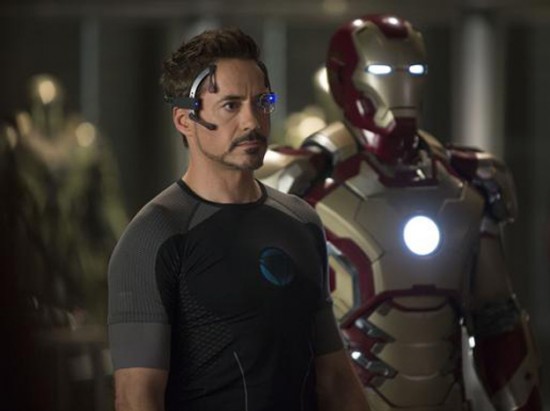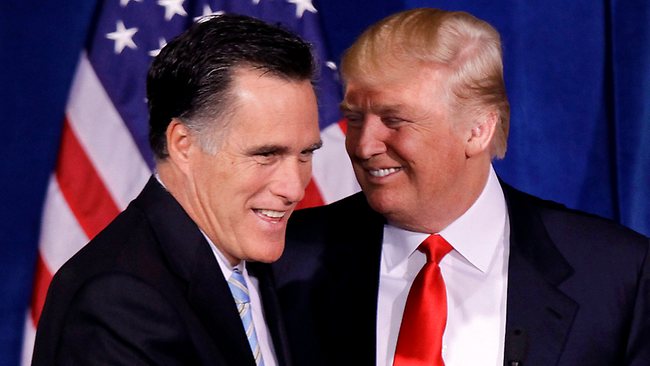Prodigies, Part I
Mozart wrote his Violin Concerto No. 3 at age 19, the exact same age at which Jesus Montero hit 9 home runs in just 44 games in the AA Eastern League.
Coincidence? I think ... well ... yes, it's a coincidence ...
***
The point of this two-part series is to examine the results of hitters who qualify both as a "Person of Interest" and as a "Distant Early Warning." In plain English, that means they showed potential as a future major-league hitter in one of the "profiles" indicating as much, and they produced those statistics at a level that was "above" where they would have been on an ordinary age-arc.
The "Prodigy" column is the second-most coveted spot on THE GRID (which we will unveil once we get through all the explanation), coming only after the "Golden Year," in which a prospect shows all the elements of future MLB success.
***
Before going to the "regular" prodigies, I want to look the "ultimate" season: The "Golden Prodigy."
The "Golden Prodigy" is a "Golden Year" achieved at an early age. In looking at every minor league player for the Mariners since 2001, it only happened two times.
These two seasons were:
- Chris Snelling at age 20 in AA in 2002
- Jesus Montero at age 20 in AAA in 2010
And, in looking at the minor-league track records of around 150 successful major-league hitters, I only found eight such seasons. [I changed the criteria as I developed things, so I may be missing some, but I think these are pretty illustrative.]
Obviously, these results mean that there are hundreds of successful major-league hitters who were never "Golden Prodigies," but what does it tell us that Jesus Montero does fit in that category?
Well, here's the chart:
|
. |
Age | Lev | G | PA | AB | H | 2B | 3B | HR | BB | SO | BA | OBP | SLG | OPS | HR/PA | BB/PA | PP | AP | K/PA | PI | +/- | |
|
. |
Andruw Jones 1996 | 19 | A+-AA-AAA | 116 | 511 | 445 | 151 | 27 | 5 | 34 | 60 | 97 | 0.339 | 0.421 | 0.652 | 1.072 | 0.067 | 0.117 | 0.247 | 0.461 | 0.190 | 0.154 | 5.489 |
|
. |
Eric Hosmer 2010 | 20 | AA | 50 | 211 | 195 | 61 | 14 | 3 | 13 | 15 | 27 | 0.313 | 0.365 | 0.615 | 0.980 | 0.062 | 0.071 | 0.213 | 0.456 | 0.128 | 0.162 | 4.105 |
|
. |
Eric Chavez 1998 | 20 | AA-AAA | 135 | 593 | 529 | 173 | 45 | 1 | 33 | 54 | 93 | 0.327 | 0.388 | 0.603 | 0.991 | 0.056 | 0.091 | 0.224 | 0.425 | 0.157 | 0.188 | 4.174 |
|
. |
Miguel Cabrera 2003 | 20 | AA | 69 | 303 | 266 | 97 | 29 | 3 | 10 | 31 | 49 | 0.365 | 0.429 | 0.609 | 1.038 | 0.033 | 0.102 | 0.241 | 0.402 | 0.162 | 0.200 | 3.857 |
|
. |
A-Rod 1994 | 18 | A-AAA-AA | 114 | 475 | 426 | 133 | 28 | 11 | 21 | 42 | 82 | 0.312 | 0.376 | 0.577 | 0.953 | 0.044 | 0.088 | 0.215 | 0.406 | 0.173 | 0.213 | 2.817 |
|
. |
Paul Konerko 1996 | 20 | AA | 133 | 557 | 470 | 141 | 23 | 2 | 29 | 72 | 85 | 0.300 | 0.397 | 0.543 | 0.939 | 0.052 | 0.129 | 0.226 | 0.357 | 0.153 | 0.236 | 6.003 |
|
. |
Justin Upton 2007 | 19 | AA-A+ | 103 | 456 | 385 | 123 | 23 | 6 | 18 | 56 | 79 | 0.319 | 0.410 | 0.551 | 0.961 | 0.039 | 0.123 | 0.226 | 0.353 | 0.173 | 0.251 | 4.473 |
|
. |
Bobby Abreu 1994 | 20 | AA | 118 | 451 | 400 | 121 | 25 | 9 | 16 | 42 | 81 | 0.303 | 0.368 | 0.530 | 0.898 | 0.035 | 0.093 | 0.204 | 0.353 | 0.180 | 0.263 | 2.176 |
|
. |
|||||||||||||||||||||||
|
. |
Montero 2010 | 20 | AAA | 123 | 504 | 453 | 131 | 34 | 3 | 21 | 46 | 91 | 0.289 | 0.353 | 0.517 | 0.870 | 0.042 | 0.091 | 0.206 | 0.355 | 0.181 | 0.258 | 2.409 |
|
. |
Snelling* 2002 | 20 | AA | 23 | 108 | 89 | 29 | 9 | 2 | 1 | 12 | 11 | 0.326 | 0.429 | 0.506 | 0.934 | 0.009 | 0.111 | 0.222 | 0.315 | 0.102 | 0.261 | 4.485 |
Where did these guys end up (in terms of career OPS+)?
- Jones: 111 OPS+
- Hosmer: 100
- Chavez: 115
- Miggy: 151
- A-Rod: 143
- Konerko: 121
- J. Upton: 117
- Abreu: 129
[To be clear, except for Mariners prospects, I did not look at minor-league seasons of guys who did not go on to be successful MLB hitters. So there are probably "Golden Prodigies" who did not achieve success, but, presumably, such guys are of the Chris Snelling variety and derailed by injuries or other problems.]
In terms of the enterprise that we're attempting here, which is to "separate gold from pyrite," it is very unlikely that Jesus Montero's results are compatible with a "pyrite" prospect.
Barring injury, Montero looks as good a bet as one can find in the prospect business.
Keep Northstar running
Last week in the Star Tribune, former Metropolitan Council Transportation Committee chairwoman Annette Meeks argued in an opinion piece entitled “Northstar Rail is a failed experiment” that at the very least weekend service should be cut on the 40-mile commuter line linking Minneapolis with several northeastern suburbs; at the very most, she argues, the entire project should be shelved.
Meeks acknowledged that no rail transit line in the country comes close to covering its operating costs, but that since Northstar’s ridership continues to fail to meet even minimal expectations, the transportation funds being spent to keep it on operation (nearly $1 million) should be used elsewhere, she argues.
Coincidentally, this week Finance & Commerce published a report entitled “Northstar traffic gets a bump; big questions loom” which revealed that ridership on Northstar has spiked up in the wake of a $1 dollar drop in fares which took place on August 1st. According to the article, September saw 67,505 passengers, a four percent increase from a year ago; encouraging news despite Northstar’s ridership projections for 2012 still being off by 3.9 percent.
In a possible rebuttal to Meeks, Metro Transit official Ed Byers said to Finance & Commerce that commuter rail lines take time to build and that it was too early to declare it a failure. I agree. I also believe the line is a viable investment.
On March 31st, 2012, I rode a Northstar train from Anoka, MN, to the line’s current terminus at Big Lake. The ride was smooth, the staff courteous, the cars were comfortable and the station stops were made on time. Above all, it was pure joy to zip by the traffic on nearby Highway 10 without having to keep my eyes peeled for stoplights and bad drivers.
In short, it was everything a commuter train ought to be. The only thing I would change is add more round trips as opposed to the majority of the trains catering to morning and afternoon commutes to and from Minneapolis on the weekdays and adding at least one more weekend round trip.
Even in its current half-completed status (the line ultimately will link Minneapolis with Saint Cloud), I believe we must keep Northstar running because one day commuter rail service to the Twin Cities will reap benefits we cannot see yet.
The solidarity myth
While perusing a forum for homeschoolers, I stumbled across a discussion about whether some people aren't qualified to homeschool. The overall opinion seemed to be it didn't matter. As homeschoolers we should support each other no matter what, otherwise those opposed to homeschooling can tear us down and more easily take away our right to educate our own children. Although this opinion probably won't make me popular, I must cry hogwash. What pulls us down is not standing up and disowning those who are irresponsible are “bad” homeschoolers.
Don't believe me? Let's look at Christianity in this country as an example. For many years, all Christians stood in solidarity together, even if their beliefs had core differences. This has resulted in a public relations nightmare. Eventually, us non-Christians began to see all Christians as intolerant, crazy wackos because the wackos were the vocal majority.
It's only in the last few years that the normal, sane Christians have realized the error of forced solidarity and have begun standing up to declare that not all Christians are hate mongering fools of the Westborough ilk. It is going to take many more years of normal Christians loudly proclaiming their normalcy before the damage is undone. Normal vegetarians are also suffering the negative PR because of early solidarity with extremist groups like PETA, and environmentalist groups are suffering from the actions of crazy fringe groups as well.
As a homeschooler, I am loud that not all of us pull our kids to teach them biblical myths about science and history. I am also loud about the fact we I homeschool because I want my children to have a more rigorous education than that found in most public schools. I am loud about being a normal parent, not a denim jumper-wearing baby machine. I scream from the rooftops, when necessary, that not all homeschoolers are fundamental Christians.
Personally, I do believe some people shouldn't homeschool. Those not willing to spend hours every day learning with their kids should send their kids to school. Those trying to shield their children from real facts and raise them in a religious myth la-la land probably shouldn't be doing it. I don't care if you teach your myths as facts as long as you also present the real facts, factually of course, but not all do so. I think those pretending to unschool when really they are just letting their kids do whatever they want should not be allowed to homeschool. (To clarify, true unschooling, which takes a lot of work on the parent's part, is legitimate homeschooling.)
I'm sorry, but I can't and I won't in good conscious stand in solidarity with all homeschoolers. Not just because I don't agree with their educational philosophy, but because I believe that some methods are hurting their children and society as a whole. Self regulating ourselves and agreeing to minor regulation to weed out poor homeschoolers willingly seems like a much better deal to me than a generation of poorly educated homeschoolers causing us to lose all rights to educating our children.
Funnily enough, the ones I see protesting annual testing the most are typically those that fall into the “bad homeschooler” category. I live in a mandatory testing state. Our kids don't have to show they are performing at public school level, only that they are gaining some new knowledge each year. Special needs kids have minimal testing requirements and the tests are even less rigorous. You can still teach your kids some BS, but you can't get away with a fact-free education or skipping education entirely.
Logical consequences
My eldest son has a simple morning chore. After breakfast, he's supposed to empty the dishwasher and load up the breakfast dishes. He has had this chore for three years, and for three years he has forgotten to do it every single day. He promptly does it when reminded, he simply just doesn't remember. I could punish him for forgetting, or I could simply remind him every morning.
At first he was punished. We would ban TV on the days he forgot, or take away another privilege. After many grumpy mornings I had to ask myself, “is this the hill I want to die on?” On one hand, I believe it's very important to learn responsibility as a child, on the other hand this is such a minor thing and he does promptly and cheerfully do it with a small reminder.
I finally decided it wasn't worth the battle. Instead, we implemented logical consequences. If the dishwasher wasn't empty by dinner time, I couldn't cook. So dinner was delayed. It took about two weeks of delayed dinners before my growing, hungry 12-year-old realized he wouldn't get dinner unless the dishwasher was empty. Nowadays the dishwasher is empty on time, without the morning arguments or grumpiness.
I've found logical consequences work most of the time to manage improper behavior. For example, with a young child that's hitting, telling them that their behavior is hurting someone else so they must do or play something else, then physically (but not roughly) leading them to a different activity often eradicates the problem. Eventually, they learn to remove themselves from the situation on their own, with only a small reminder.
Of course, behavior that is dangerous to the child or others must be dealt with promptly and sometimes with more traditional discipline. But the small battles, where children aren't purposefully being disobedient, can usually be solved by applying logical consequences instead of punishments or engaging in a drawn out battle.
Further thoughts on reading
Practice makes perfect, and there is no where that this is more true than in reading. One of the most frustrating periods of learning, for both the kids and the teacher, is when the child understands and can implement the major reading rules but hasn't yet mastered them sufficiently for fluency. The length of this period varies between children, which is why the early school years results in classes with reading abilities all over the map.
With my kids, I focus on reading for 60 to 90 minutes a day, although further practice sneaks in throughout our regular learning. We spend about 10 minutes reviewing rules or going over new ones, then my son launches into word work. In a classroom setting, you could have word work stations for the kids to rotate through, but in our small homeschool we use plastic tubs on a shelf.
On Pinterest and teacher blogs, you can find a million free word work activities, but we have settled on a few favorites. I try to rotate in something new every few weeks to keep it fresh. For reading and word activities, we have a scrabble like game. I made letter tiles with craft foam. My son uses the tiles to spell words. Each letter is only worth one point, unless he tries to spell words from a special word list, such as days of the week, months, number words or color words. Those letters are worth two points. For every 100 points he gets to pick something from a treasure chest.
We also have the writing work tub. It holds a stationary set so he can write letters (we even have a tin can mail box to “mail” the letters. I actually mail those written to real people, from family members to Astronauts and authors). We have a supply of handmade mini-blank books for writing our own books and we also have fancy pens with colorful ink for basic writing practice.
Word work takes up to 30 or 45 minutes some days. We also spend at least 30 minutes actually reading. He must read to me or his brother for at least 20 minutes, and read to himself for 10 to 20 minutes, depending on his stamina that day and the difficulty of the book.
Planting garlic
I have one last crop to get in before the snow comes and the ground freezes solid. I must plant it now if I want to enjoy it this summer. Can you guess what it is? That's right, garlic! We love our garlic. I harvest the scapes, or the swollen stem tops, in early summer for making pesto or using in stir fry. The bulbs provide for us year-round in a multitude of dishes. Garlic spends most of the year in the ground, so dedicate an entire bed to it and don't plan to grow anything else there for a year.
Garlic is one of the easiest plants to plant and grow. Break apart a clove and use the large, outer cloves for planting. If the cloves aren't treated you can use the small inner cloves for cooking. Plant the cloves outside after you've had frost but before the ground begins to freeze. Around Halloween is a good time in the Pacific Northwest, although in milder climates you can plant around Thanksgiving.
Plant the garlic in a full sun bed amended with plenty of compost. Garlic won't need any fertilization if the soil is rich. Plant the cloves two inches deep with the flat side on the bottom and the pointed end at the top. Space your cloves five inches apart. I like neat rows, personally.
Moisten the soil thoroughly then cover the bed with a thick four-inch layer of straw. The bulbs happily overwinter in their snug bed, often sending up initial green shoots soon after planting. Once spring arrives, the garlic really takes off and begins growing. You can harvest scapes as soon as the ends begin to swell. You really should harvest them, too, otherwise the bulbs won't grow as large. You can harvest the bulbs in midsummer after the foliage begins to yellow and die back.
Oh No They Didn't: Don't Parkour and more crazy dumps
'Iron Man 3' trailer drops, and it sure looks dark
Well well, Marvel fans, guess what? The first trailer for Iron Man 3 is out, and it's pretty awesome. It also left me with a ton of unanswered questions, so that was shrewd: Make the super crazy fan girl wait months and blog about her theories and *then* unleash the movie in April 2013, when she's reached the end of her rope!
Without any further buildup, here's the new Iron Man 3 trailer:
A few months ago, fans at Comic-Con got a good look at Iron Man 3's overall look -- and word was, it was some pretty dark stuff. In fact, I distinctly remember this piece from Screenrant, suggesting that Iron Man 3's trailer was less Marvel and far more Dark Knight.
I agree. This one is definitely far more bleak than previous Iron Man installments. The trailer more than hints at that -- it whacks you smack over the head with hopelessness and despair. This is post Battle of Manhattan (The Avengers), after all, and he's not in the best of places, it seems. He has "a lot of apologies to make." Still, it's Tony Stark, and he'll find some way to get through everything. Right? Right?!?!?!?
We get a voiceover from the Mandarin, a man set on destroying Tony's entire world. We see Tony's mega-mansion being destroyed. We also see Stark on an operation table (alarming!). And one can surmise that Tony Stark/Iron Man is not going to stand for this evil threatening his life, his loved ones and everything he's built.
My vote is solidly with Tony Stark on this one. Iron Man 3 is going to be epic, if this trailer is any indication. Do you agree?
Donald Trump's big announcement
Donald Trump’s big announced seemed to be nothing more than trying to get some of the limelight to himself. What better way to eat up the media attention than circulate reports about a possible bombshell being dropped about President Obama?
I suppose reading Obama’s college transcripts and his passport application would be interesting and solve some of the problems for a substantial minority of Americans. But, if we go by what the non-partisan website Factcheck.org has to say, presidents usually don’t release these types of records.
Even the transcripts that were obtained from George W. Bush and John Kerry were actually leaked by the press rather than being released by Bush and Kerry.
I was quite disappointed about the Trump announcement because I expected something bigger. It merely served to rehash a few unimportant issues that were already out there. Unimportant because even if President Obama was going to do what Trump asked him to do, he would not make the conspiracy theories go away altogether.
President Obama predictably brushed it off on Jay Leno’s show with jokes about him have a beef with Trump that dates back to their childhood days in Kenya.
I guess the media and people like me have encouraged this type of self-promotion from the business magnate. It seems like anything that Trump does or talks about is newsworthy. The problem is that with antics like this it makes Trump appear to be the ‘clown’ that right-winger Michelle Malkin aptly called him.
I don’t think Trump is helping the Republican cause with announcements such as these as it is going to make the American people hate people like him more. His ‘I will give $5M to the charity of Obama’s choice’ is the type of elitist comments that Romney is trying to steer clear off.
Links for October 24, 2012
A Japanese nuclear expert says that robots cannot help and humans must ‘decommission’ Fukushima reactors. enenews.com
Edano, Japanese Minister of Economy says that spent nuclear fuel should be stored in Tokyo and other big cities. fukushima-diary.com
Entire food web including humans may be affected as Fukushima radionuclides spread to West Coast. enenews.com
Radiation-fearing citizens choose umbrellas to protect themselves from radiation. telegraph.co.uk








